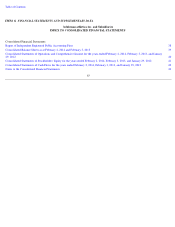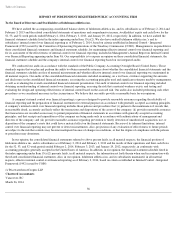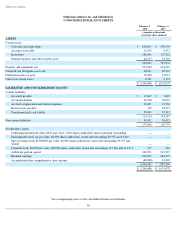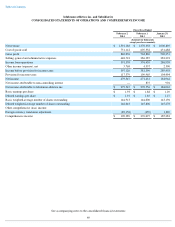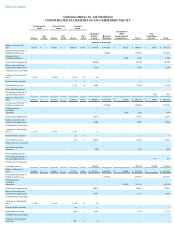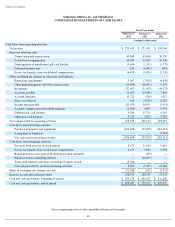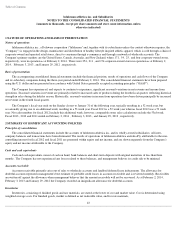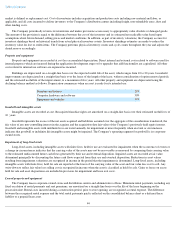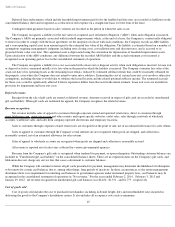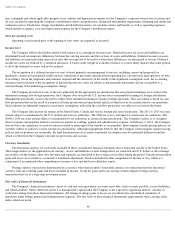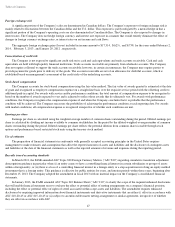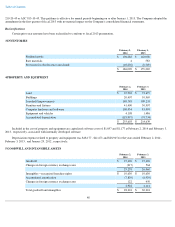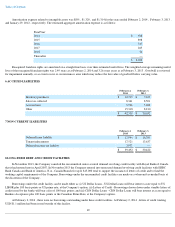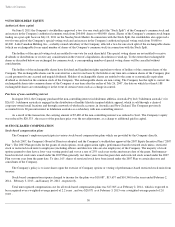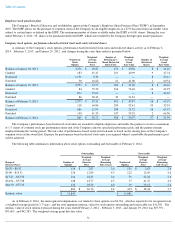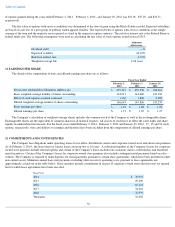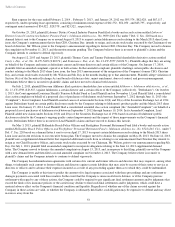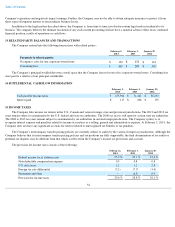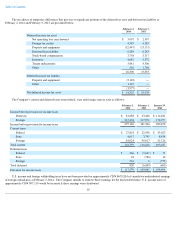Lululemon 2013 Annual Report Download - page 53
Download and view the complete annual report
Please find page 53 of the 2013 Lululemon annual report below. You can navigate through the pages in the report by either clicking on the pages listed below, or by using the keyword search tool below to find specific information within the annual report.
Table of Contents
Deferred lease inducements, which include leasehold improvements paid for by the landlord and free rent, are recorded as liabilities on the
consolidated balance sheet and recognized as a reduction of rent expense on a straight-line basis over the term of the lease.
Contingent rental payments based on sales volumes are recorded in the period in which the sales occur.
The Company recognizes a liability for the fair value of a required asset retirement obligation ("ARO") when such obligation is incurred.
The Company's AROs are primarily associated with leasehold improvements which, at the end of a lease, the Company is contractually obligated
to remove in order to comply with the lease agreement. At the inception of a lease with such conditions, the Company records an ARO liability
and a corresponding capital asset in an amount equal to the estimated fair value of the obligation. The liability is estimated based on a number of
assumptions requiring management's judgment, including store closing costs, cost inflation rates and discount rates, and is accreted to its
projected future value over time. The capitalized asset is depreciated using the convention for depreciation of leasehold improvement assets.
Upon satisfaction of the ARO conditions, any difference between the recorded ARO liability and the actual retirement costs incurred is
recognized as an operating gain or loss in the consolidated statements of operations.
The Company recognizes a liability for a cost associated with a lease exit or disposal activity when such obligation is incurred. A lease exit
or disposal activity is measured initially at its fair value in the period in which the liability is incurred. The Company estimates fair value at the
cease-use date of its operating leases as the remaining lease rentals, reduced by estimated sublease rentals that could be reasonably obtained for
the property, even where the Company does not intend to enter into a sublease. Estimating the cost of certain lease exit costs involves subjective
assumptions, including the time it would take to sublease the leased location and the related potential sublease income. The estimated accruals
for these costs could be significantly affected if future experience differs from that used in the initial estimate. Lease exit costs are included in
provision for impairment and lease exit costs.
Deferred revenue
Receipts from the sale of gift cards are treated as deferred revenue. Amounts received in respect of gift cards are recorded as unredeemed
gift card liability. When gift cards are redeemed for apparel, the Company recognizes the related revenue.
Revenue recognition
Net revenue includes sales of apparel to customers through corporate-owned and operated retail stores, direct to consumer through
www.lululemon.com , www.ivivva.com and other country and region specific websites, outlet sales, sales through a network of wholesale
accounts, warehouse sales, and sales from company-operated showrooms and temporary locations.
Sales to customers through corporate-
owned retail stores are recognized at the point of sale, net of an estimated allowance for sales returns.
Sales of apparel to customers through the Company's retail internet site are recognized when goods are shipped, and collection is
reasonably assured, net of an estimated allowance for sales returns.
Sales of apparel to wholesale accounts are recognized when goods are shipped and collection is reasonably assured.
All revenue is reported net of sales taxes collected for various governmental agencies.
Revenue from the Company's gift cards is recognized when tendered for payment, or upon redemption. Outstanding customer balances are
included in "Unredeemed gift card liability" on the consolidated balance sheets. There are no expiration dates on the Company's gift cards, and
lululemon does not charge any service fees that cause a decrement to customer balances.
While the Company will continue to honor all gift cards presented for payment, management may determine the likelihood of redemption
to be remote for certain card balances due to, among other things, long periods of inactivity. In these circumstances, to the extent management
determines there is no requirement for remitting card balances to government agencies under unclaimed property laws, card balances may be
recognized in the consolidated statements of operations in "Net revenue." For the years ended February 2, 2014 , February 3, 2013 and
January 29, 2012 , net revenue recognized on unredeemed gift card balances was $4,654 , $1,351 , and $1,775 , respectively.
Cost of goods sold
Cost of goods sold includes the cost of purchased merchandise, including in-bound freight, duty and nonrefundable taxes incurred in
delivering the goods to the Company's distribution centers. It also includes all occupancy costs such as minimum
45



